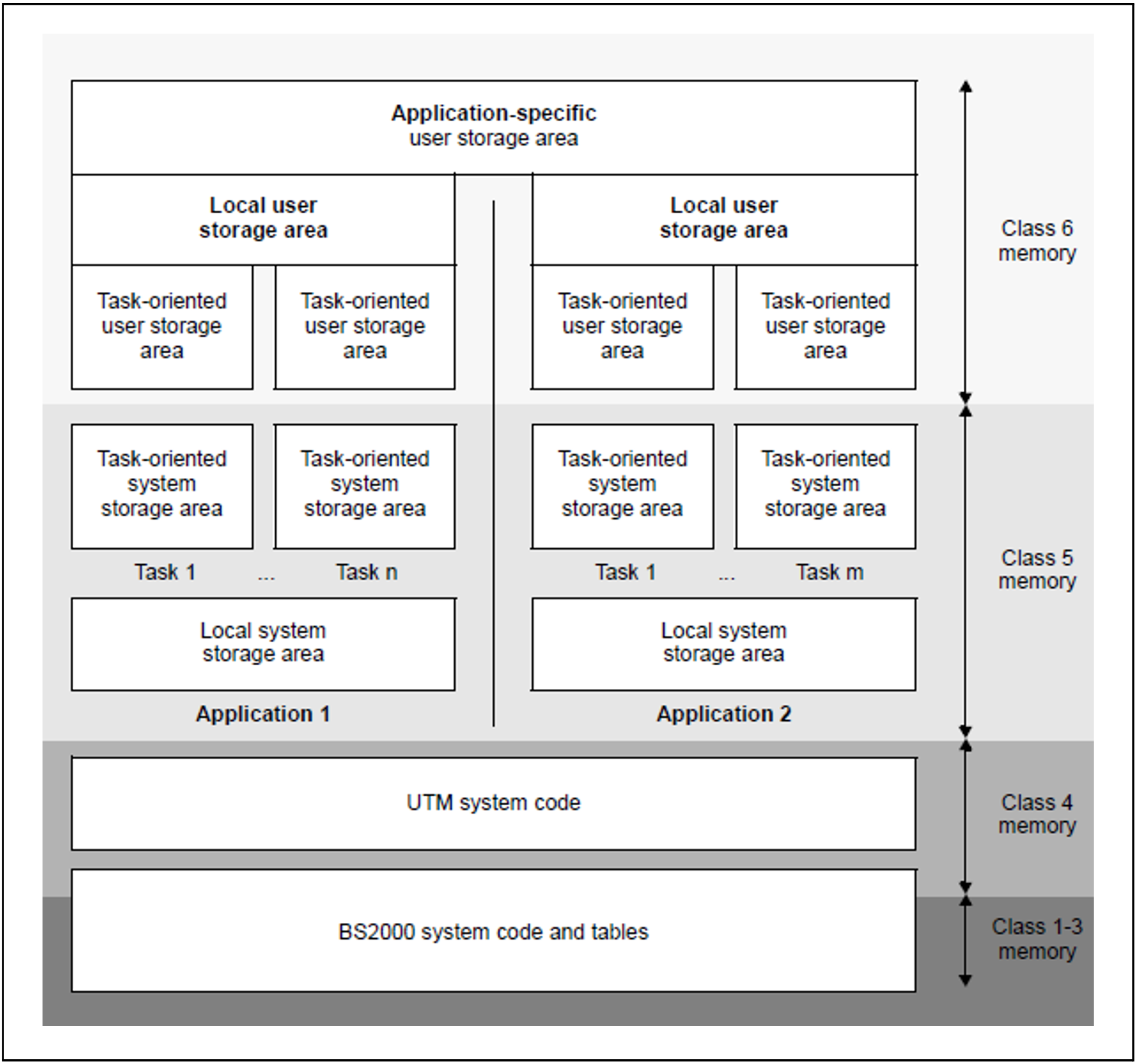The storage areas used by a UTM application are stored in different BS2000 storage classes depending on the type of data.
The UTM system code is generally located in the class 4 storage area and is therefore used jointly by all processes of all UTM applications of a BS2000 system.
Local application system storage areas with configuration data, administrative data, and a buffer area for reducing file accesses (cache) are stored in common memory pools in the class 5 storage area. In order to relieve the load on the program address space, the cache can alternatively be created in one or more data spaces. The system storage areas of a UTM application can only be accessed by the processes of the local application and not by processes of other UTM applications.
Each process of a UTM application is assigned a separate process-specific class 5 storage area which contains the current system data for a job or program run. This data area can only be accessed by one process and only by the UTM system functions. This data is inaccessible even to other processes within the same application, i.e. processes within the same application are isolated from each other. User programs cannot write to the area and hence cannot interfere with the execution of UTM system functions.
The operating system assigns a user address space in the class 6 storage area to each process of a UTM application. Depending on the utilization, this user address space can be process-specific or can be shared as a common memory pool by all processes of an application (local) or by the processes of several applications (global). In general, the user address space contains:
The main routine KDCROOT, which establishes contact between program units and UTM system functions, as well as data and buffer areas that are shared by the UTM system functions and the main routine.
When generating the application, parameterization of the main routine is application-specific.The program units and their data areas. If program units can be used repeatedly (i.e. are shareable), then they can be stored in shared user storage areas that are local or global to the application in common memory pools or in non-privileged subsystems. This reduces the size of the external memory (paging area) occupied by the processes of the application and reduces the amount of paging, thereby enhancing performance.
The formatting routines for editing screen forms and printer forms and the format definitions belonging to the application. If the format handling system FHS is used, these can also be stored as sharable units in common memory pools.
File systems (e.g. LEASY) with associated connection module(s) for database systems such as UDS/SQL and SESAM/SQL.
Runtime systems of the programming languages in which the program units are encoded.
Administration program units for the UTM application.
The following diagram provides an overview of the storage structure of a UTM application in a BS2000 system.
Figure 41: Storage structure of UTM applications on BS2000 systems

